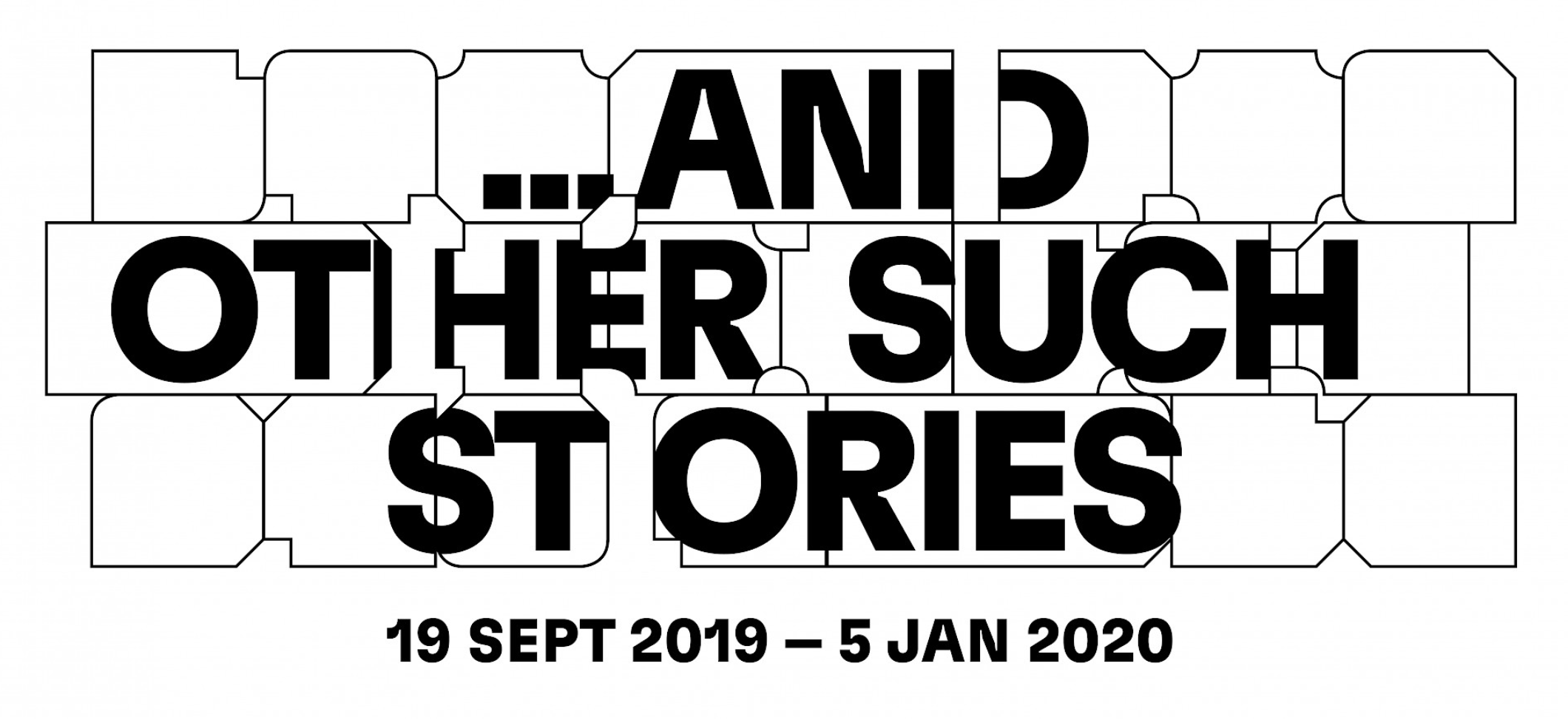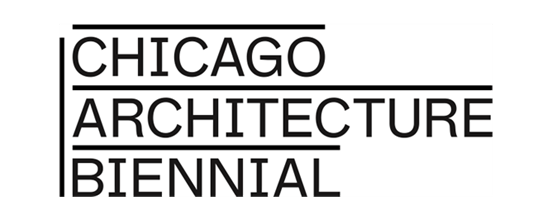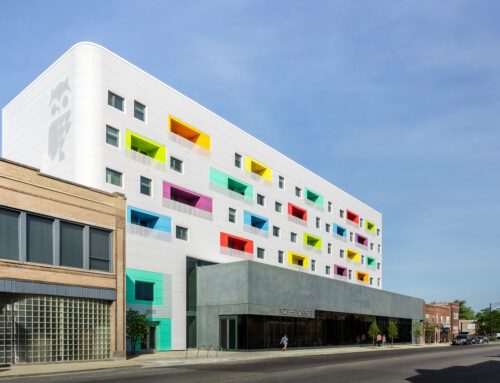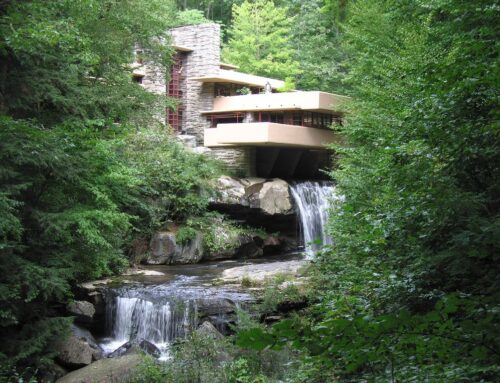The Chicago Architecture Biennial is a 501(c)(3) non-profit organization dedicated to creating an international forum on architecture and urbanism through the production of distinctive exhibitions and public programs. The Biennial creates new opportunities every two years for emerging talent in architecture, design, and the arts to engage a wide public audience.
The Chicago Architecture Biennial is committed to providing a platform to unite the global vanguard of architectural thought and practice with the city of Chicago’s unique legacy of architectural innovation. In addition to its biennial constellation of exhibitions, full-scale installations, programming, and educational initiatives, the organization stewards and promotes an ongoing dialogue on architecture in and around the city. Each edition of the Chicago Architecture Biennial takes as its core a theme that addresses the most compelling issues in contemporary architectural practice. Designed to deepen and expand the conversation on architecture and the built environment with field leaders and everyday citizens, the Chicago Architecture Biennial is a platform created to further our understanding globally and locally of the way we organize society through the exploration of the built environment. The Biennial seeks to envision a future of architecture that is, first and foremost, shared, inclusive, diverse, sustainable, and equitable.
The inaugural 2015 Chicago Architecture Biennial was the manifestation of Mayor Rahm Emanuel’s vision for a major international architectural event and a product of the comprehensive cultural plan developed by Chicago’s Department of Cultural Affairs and Special Events. Titled The State of the Art of Architecture, the 2015 Biennial was curated by Artistic Directors Sarah Herda of the Graham Foundation and architect, critic, curator, and editor Joseph Grima and centered on a 1977 conference organized by architect Stanley Tigerman. The inaugural Biennial expanded the spirit and scope of this event, inviting an international and intergenerational architectural network to Chicago to explore how visionary design can take on the most pressing issues of today. The 2015 Biennial encompassed an array of exhibitions, full-scale installations, and diverse programming. The Biennial provided the public an opportunity to engage with and think about architecture in new and unexpected ways and to take part in a global discussion on the future of the built environment.
For the second edition of the Biennial in 2017, the exhibition and programming was curated under the artistic and curatorial leadership of Sharon Johnston and Mark Lee from the Los Angeles–based firm Johnston Marklee & Associates, which also participated in the inaugural Biennial. The Artistic Directors developed a series of topics for their show titled MAKE NEW HISTORY, including image, material, building, and civic histories and highlighted different modes of architectural production from the book to the city.
Through drawings, installations, environments, and performances, biennial projects from both editions reflected the ongoing significance of contemporary discourse that is founded in the myriad ways that history is invoked in the production of new forms of architectural thought.
The third edition of the Biennial will open September 19, 2019, and will convene the world’s leading practitioners, theorists, and commentators in the field of architecture and urbanism to further explore, debate, and demonstrate the significance of architectural concepts in contemporary society. The 2019 Chicago Architecture Biennial is led by Artistic Director Yesomi Umolu with curators Sepake Angiama and Paulo Tavares.
Titled …and other such stories, the 2019 Chicago Architecture Biennial is rooted in close readings of the spatial realities of its host city. Sitting at the crossroads of the Great Plains and the Great Lakes, Chicago has been shaped by planetary forces: colonial expansion, mass migration, extraction economies, and rapid industrialization. Thus, Chicago’s urbanism is inextricable from the flows of people, goods, and capital—and the concurrent exploitation of bodies, labor, and nature—that have contributed to its making. Today, despite the promise of economic development, Chicago, like many other established and emergent global metropolises, faces challenging urban conditions that require the reimagining of forms of exchange between human activity, technology, and the natural world. By extension, owing to its physical geography, Chicago is a singular context in which to address climate and ecological concerns shared by many postindustrial societies.
A city of cultural encounters and differences, Chicago has been shaped by waves of migration from Europe, the American South, and Latin America. Yet its urban fabric displays clear demographic demarcations and acute forms of spatial segregation that have been forged through uneven planning and housing policies. These divisions impact the experiences of residents and visitors today and replicate patterns of social and economic inequity that pervade cities and nation states around the world. The realities of spatial injustice in Chicago co-exist alongside the city’s history as an epicenter of progressive social movements that have often leveraged architecture and public space as sites for social action and advocacy. Chicago is thus an ideal site for investigation of the ways the built space reflects and impacts our understanding of the common, the collective, and the constitutional.
The story of Chicago’s urban evolution is one of many such tales. The city illuminates many key issues confronting architecture and urbanism today, and its stories extend beyond regional and national boundaries to parallel those of other built and natural environments worldwide. Building upon a research-driven approach to historical and contemporary spatial conditions, …and other such stories draws from the complexities and potentialities of Chicago to trace dialogues between various practices and the questions they raise across global communities, cities, territories, and ecologies.
The third edition of the Chicago Architecture Biennial, …and other such stories invites practitioners and the public to engage with architecture and the built environment as prisms through which to reflect upon social, geopolitical, and ecological processes that affect our collective past, present, and future. The exhibition is structured by a series of curatorial frames:
No Land Beyond: Reflects on landscapes of belonging and sovereignty that challenge narrow definitions of land as property and commodity. Taking inspiration from indigenous cosmologies and considering social ecologies as comprising multi-species networks and constituencies, the Biennial thinks through alternative designs and relationships between nature, society, and the built environment.
Appearances and Erasures: Explores sites of memory and the politics of remembering and/or forgetting in contested spaces, considering space as a marker of past and present social imaginaries, visible or otherwise.
Rights and Reclamations: Interprets space—urban, territorial, environmental—as a site of advocacy and civic participation, investigating spatial practices that foreground the rights of humans and nature.
Common Ground: Engages and addresses a constituency of actors and agents invested in developing tactics and methodologies for producing and intervening in public space—both within and beyond the field of architecture.
Presenting practices and projects that include building, design, planning, visual art, policymaking, pedagogy, research, and activism, among others, …and other such stories embraces architecture as an expansive practice that crosses disciplines and scales; engages a broad spectrum of spatial practitioners and publics; and functions across diverse sociopolitical and cultural registers. Extending its reach into the city and across neighborhoods, this project also features collaborations with Chicago-based organizations and communities aimed at fostering conversations that resonate simultaneously at local and global registers. In our current moment of shifting geopolitical alliances, rapid environmental change, and renegotiations of rights and civic life, …and other such stories draws out multiple narratives, perspectives, and positions, opening up arenas of speculation that imagine space and the built environment anew.
Source: Chicago Architecture Biennial





